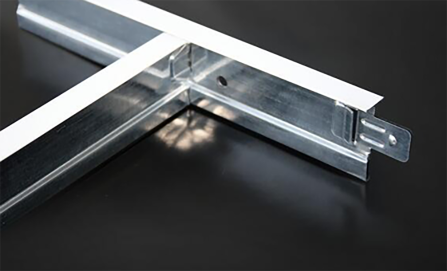- Afrikaans
- Albanian
- Amharic
- Arabic
- Armenian
- Azerbaijani
- Basque
- Belarusian
- Bengali
- Bosnian
- Bulgarian
- Catalan
- Cebuano
- Corsican
- Croatian
- Czech
- Danish
- Dutch
- English
- Esperanto
- Estonian
- French
- German
- Greek
- Hindi
- Indonesian
- irish
- Italian
- Japanese
- Korean
- Lao
- Malay
- Myanmar
- Norwegian
- Norwegian
- Polish
- Portuguese
- Romanian
- Russian
- Serbian
- Spanish
- Swedish
- Thai
- Turkish
- Ukrainian
- Uzbek
- Vietnamese
Gus . 15, 2024 15:57 Back to list
Secure Fire Rated Ceiling Access Hatch for Enhanced Safety and Compliance in Buildings
Understanding Fire Rated Ceiling Hatches Importance and Features
In modern construction, safety and compliance with building codes are paramount. One crucial aspect of this is the incorporation of fire-rated materials and assemblies designed to resist the spread of fire. Among these elements is the fire-rated ceiling hatch, which plays a significant role in maintaining the integrity of fire-rated ceilings while providing access to mechanical spaces, utilities, or other areas above the ceiling.
What is a Fire Rated Ceiling Hatch?
A fire-rated ceiling hatch is an access point installed in a fire-rated ceiling system. It is designed to withstand fire exposure for a specified period, typically ranging from 30 minutes to several hours, depending on the requirements dictated by local building codes and safety regulations. The primary function of a fire-rated hatch is to prevent fire and smoke from traveling through the opening created by the hatch, thus ensuring the overall effectiveness of a fire barrier.
Importance of Fire Rated Ceiling Hatches
1. Life Safety The foremost reason for installing fire-rated ceiling hatches is life safety. In the event of a fire, these hatches help to contain the flames and prevents smoke infiltration into other areas of the building. This containment not only protects lives but also helps in safeguarding property.
2. Building Code Compliance Local building regulations often stipulate the need for fire-rated assemblies in certain areas of a building, such as corridors or storage rooms. Fire-rated ceiling hatches are essential to comply with these codes, thereby avoiding potential fines or enforcement actions from local authorities.
3. Structural Integrity Beyond the immediate safety benefits, fire-rated ceiling hatches contribute to the structural integrity of a building. They are engineered to maintain the efficacy of fire-rated walls and ceilings, which are designed to resist the passage of heat and flames for a specific duration.
4. Accessibility While fire safety is the primary concern, fire-rated ceiling hatches also provide much-needed access for maintenance staff, allowing them to reach ductwork, electrical components, and plumbing systems. This accessibility is vital in the event of needing repairs or inspections without compromising fire safety.
fire rated ceiling hatch

Key Features to Consider
When selecting a fire-rated ceiling hatch, several features should be considered
1. Fire Rating Ensure that the hatch meets the required fire resistance rating as specified by local codes. Check certifications from recognized testing laboratories, like Underwriters Laboratories (UL).
2. Materials The materials used in construction should offer robust resistance to fire. Manufacturers typically use steel or other non-combustible materials coated with fire-resistant insulation.
3. Sealant A fire-rated hatch should have a smoke and fire-resistant seal to minimize the infiltration of smoke and flames during a fire incident.
4. Ease of Use Consider the design of the hatch for ease of operation. It should allow for straightforward access without compromising the fire rating when closed.
5. Size The size of the hatch should be adequate for the intended purpose, whether for maintenance access or emergency egress.
Conclusion
In conclusion, fire-rated ceiling hatches are critical components in modern building design, playing an essential role in fire safety and compliance with building codes. By understanding their importance, features, and functional benefits, architects, builders, and facility managers can make informed decisions that enhance both safety and accessibility in their buildings. Investing in high-quality fire-rated ceiling hatches not only complies with regulatory requirements but also contributes to the overall safety and longevity of the infrastructure.
-
Transform Interiors with PVC Gypsum Ceiling: A Stylish, Durable, and Moisture-Resistant SolutionNewsMay.19,2025
-
The Smart Interior Upgrade: Discover the Durability and Versatility of Gypsum Ceiling Access Panel SolutionsNewsMay.19,2025
-
The Smart Choice for Interior Design: Discover the Value of PVC Gypsum Ceiling SolutionsNewsMay.19,2025
-
Mineral Fiber Ceiling Tiles: The Smart Blend of Performance and AestheticsNewsMay.19,2025
-
Mineral Fiber Ceiling Tiles: The Superior Choice Over Gypsum for Sound and Fire SafetyNewsMay.19,2025
-
Mineral Fiber Ceiling Tiles: Eco-Friendly Strength and Style for Every CeilingNewsMay.19,2025







